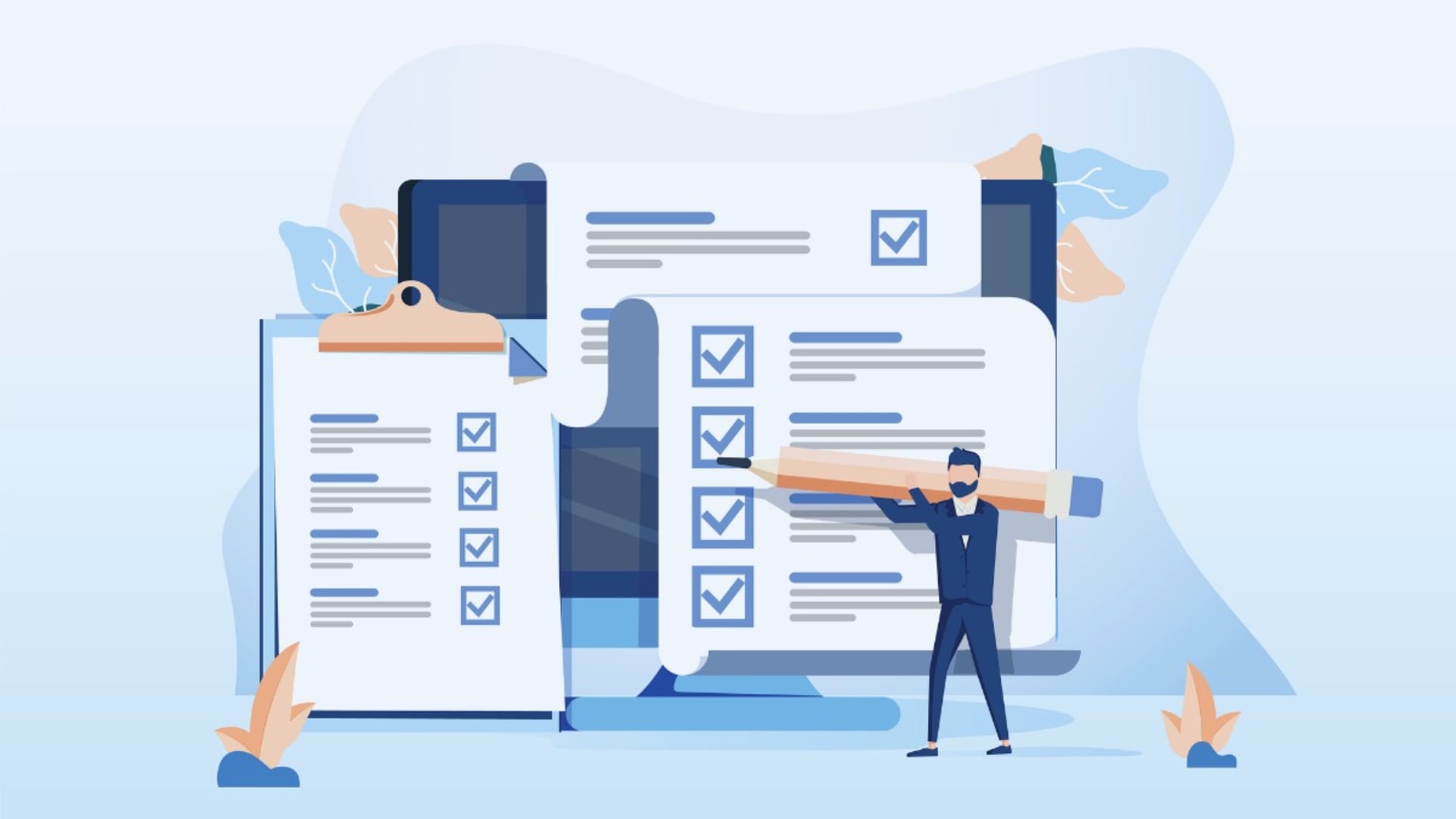The importance of quality assurance in software engineering cannot be overstated. To guarantee our software performs as expected and satisfies the ever-changing demands of our users and other stakeholders, we must do thorough testing at every stage of the development lifecycle.
The robust test plan is the backbone of this process since it specifies how the software will be validated and verified. This article focuses on how to manage risks while maintaining software quality successfully. We’ll go through what goes into a test plan, how others have approached making one, and how you might follow in their footsteps to become an expert.
What is a Test Plan in Software Testing?
A test plan is a crafted document designed with one purpose in mind: to coordinate the testing process. It serves as a guiding compass that ensures every aspect of a software application undergoes scrutiny and validation.
It’s important to distinguish between a full test execution plan and test cases. Test cases provide descriptions of tests to be conducted whereas a test plan offers a broad overview of the entire testing process. Think of it as a master plan that guides the execution of test cases.
Why is a Test Plan Necessary?
You might wonder why a test plan is necessary when you could simply start testing. The answer lies in minimizing errors and reducing risks. By following a plan you are less likely to overlook test scenarios that could lead to costly issues after release.
Moreover, a test plan is not a document. It serves as a tool for alignment. It ensures that everyone involved, including developers, testers, project managers, and business analysts, shares an understanding of testing objectives and expectations. This alignment is essential for the testing phase. Ultimately leads to successful software releases.
It is important to consider risk management as risks are bound to arise. In the unpredictable world of software development, risks are inevitable. A well-defined test plan helps identify potential pitfalls and provides a framework for mitigating them. Your safety net is ready to catch you when unexpected issues arise.
Key Elements of a Test Plan
A test plan is a foundational document that dictates the trajectory of the testing process. It serves as the compass, charting the course to ensure that the software or feature under scrutiny emerges robust and error-free. To create an effective test plan, we must meticulously dissect its key elements, each a vital piece of the quality assurance puzzle.
Objectives and Scope
The goals and scope of every test strategy should be absolutely clear. The goal of the software or functionality being tested is laid out here with precision. This isn’t just a filler sentence; it’s a powerful statement of purpose that addresses the essential issue, “What are we trying to accomplish through software testing activities?”
Even boundaries need to be drawn up precisely. In this area, we demarcate the scope of our testing, deciding what will undergo in-depth analysis and what will escape our scrutiny. These limits prevent us from venturing into unfamiliar terrain and acting as sentinels to prevent mission creep.
Furthermore, it is necessary to list the software’s testable parts. This is where we keep track of everything that has to be tested, from the smallest subroutine to the largest module.
Resources and Budget
Allocating resources and considering realistic financial limits is another vital component of our test plan design. In this section, we will talk about the distribution of resources. We consider the crucial stakeholders like testers, team leads, and managers, along with the part they play in the testing process. Each member of the team should be perfectly attuned to his or her role, creating an atmosphere of harmony similar to that of a symphony orchestra.
The technological strength of our testing effort is vested in our collection of tools and programs. We get down to the nitty-gritty, investigating the tools that will allow our testers to perform their testing symphony. Here, we decide whether to employ test automation alone, manual, or a hybrid of testing methods to provide full coverage.
However, financial limits tend to be the most rigid of all. Financial constraints hamper our testing efforts, as discussed here. These limitations are more than just numbers; they form the basis for our testing methodologies and determine the breadth and depth of our efforts.
Test Schedule
Time is a precious resource in software development. Define the timeline for different testing phases. We must pay close attention to dependencies the results of one test case might have far-reaching consequences for others and keep track of their interdependencies. We need to map these interdependencies so that we won’t be swept away by unforeseen challenges.
In addition, the testing plan has to be in sync with the overall project timetable. Here, we make sure that the peaks of our testing efforts are in time with the swells of the software development process.
Test Data and Environment
Detail the type of data that will be used for testing. Will you use real data or simulated data? Ensure that the test environment mirrors the production environment as closely as possible. This alignment is critical for accurate testing results.
Test Cases and Criteria
Here, you are to decipher what constitutes a test case. Each one should be a meticulously scripted scenario designed to probe the software’s strengths and vulnerabilities. These test cases are the lighthouses guiding our testing voyage, illuminating the path to comprehensive coverage.
Laying down criteria for success and failure is paramount so that it’s clear to classify the results. We set the standards by which the performance of our software will be judged.
Roles and Responsibilities
The delineation of roles and responsibilities is paramount. Assign each member of the testing team a unique role. Clarity in roles prevents issues, thereby enabling seamless communication and ensuring that each member understands their part.
It is critical to emphasize the need for clear communication pathways, ensuring that information flows seamlessly to avoid unforeseen issues.
Risks and Contingencies
The ever-present chance of risks endangers successful software testing. You should identify the possible hurdles that may obstruct our testing process. These hurdles can disrupt the software testing document and process.
It is also important to create a backup plan for these unforeseen issues. Each identified risk is met with a contingency plan by implementing alternative courses of action that ensure your testing performance remains on course.
Approval and Sign-Off
Stakeholder sign-off is the nod of approval, much like the applause that follows a well-executed musical performance.
We also mention the criteria that must be met before proceeding to the next phase of testing progress post-testing. These criteria ensure that the testing performance has met the expectations of the audience, both internal and external.
Best Practices for Creating a Test Plan
Creating an effective test plan is not just about filling in the blanks of a template. It’s an ever evolving process that necessitates teamwork and ongoing enhancements. Here are a few key principles to bear in mind.
Collaboration with Stakeholders
Collaboration between product managers and also with developers and anybody else who is able to provide insights into the capabilities and expectations of the program is required in order to fulfill the requirements of the software.
Continuous Review and Iteration
It is essential to keep in mind that a test strategy is dynamic and should change in accordance with the development of the project. If the testing strategy is examined and altered on a consistent basis, it will be able to adapt to shifting risks and goals.
Thoroughness and Flexibility
Developing an efficient test plan incurs expenses, requiring attention to detail and a systematic approach.
How To Create A Test Plan
Developing a test strategy can be quite a task requiring meticulous attention to detail and a systematic approach to testing document. In this section, we will walk you through the step by step procedure of crafting a test plan.
#1 Understand the Product
To adequately prepare for the test, it is crucial to have an understanding of the product you will be evaluating. This entails examining its structure and objectives like carefully studying detailed plans of a building instead of merely glancing at them. Maintaining constant communication with all the stakeholders is also essential throughout the process. Participate in talks with product managers and engineers to obtain their feedback and perspectives.
#2 Define the Test Strategy & Scope
Having grasped the essence of the product, the next step is to define the test strategy and the test scope itself. This is the blueprint that outlines the overarching approach to testing.
Begin by clearly outlining what will be tested and, equally crucial, what won’t be. Imagine this as the sculptor’s initial chiseling strokes, shaping the form of the sculpture. This step sets the boundaries and focuses testing efforts.
To delve deeper, break down the product into testable components or modules. This dissection process resembles a surgeon meticulously dividing a complex organism into its constituent parts. Each component or module becomes a target for focused testing.
To further refine the scope, prioritize features based on factors like user impact, risk, or novelty. This is similar to a curator selecting artworks for an exhibition, ensuring that the most critical and innovative aspects of the product receive thorough testing.
#3 Identify Test Objectives
With scope defined, it’s time to set clear test objectives. Think of this as the mission statement, articulating what you aim to achieve through the testing process. Each test objective is a guiding star, providing direction in the vast universe of testing.
Align these objectives with the broader product goals and stakeholder expectations. This alignment ensures that the testing mission is synchronized with the overarching objectives of the product.
#4 Determine Test Criteria
As for the test criteria, we set the standards by suspension criteria by which the performance of the product will be judged. This is similar to defining the metrics that will determine the quality.
First, set the criteria for a successful test. Clearly define the expected outcome of each test case.
Moreover, establish the “exit criteria.” These are the conditions under which testing will cease. Exit criteria ensure that testing does not become an endless loop.
#5 Allocate Resources
Effective testing requires the allocation of resources. Identify the tools, test environments used, and personnel needed for testing.
Outline any training requirements for the test team. Training is the rehearsal before the performance, ensuring that each member of the team is well-versed in their role and responsibilities.
#6 Write Test Cases
Test cases are the individual movements in the symphony of testing. Detail specific scenarios and conditions under which the software will be tested.
Ensure that your test cases cover both positive (expected use) and negative (potential errors) scenarios. This comprehensive coverage is similar to exploring the entire musical scale, from harmonious melodies to discordant notes.
#7 Plan Test Data
Test data is the fuel that powers your testing engine. Determine the kind of data needed to test various scenarios.
Decide whether to use real data, similar to playing actual musical pieces, or synthetic data, which provides controlled variability. Privacy and accuracy considerations are paramount, much like ensuring that the chosen musical pieces are appropriate and well-tuned.
#8 Configure Test Environment
In the realm of the test environment, we aim to create a stage that mirrors the production setup as closely as possible. Ensure that the test environment is a faithful replica of the production environment. Consider aspects like hardware, software, and network configurations.
#9 Assign Roles and Responsibilities
Just as a test manager is at the helm, orchestrating the various components, each team member has a specific role, akin to a musician in an orchestra. Detail who is responsible for each task in the test plans. It’s essential to establish clear lines of communication and escalation paths to ensure smooth transitions, especially if there’s a need to suspend testing due to unforeseen challenges.
#10 Identify Risks and Create Contingency Plans
Testing, though meticulously planned, is prone to unexpected challenges. It’s not uncommon to suspend testing temporarily due to issues like software defects, delays, or resource shortages. Each identified risk directly affects the software’s quality. It’s the test manager’s duty to prepare alternate plans for each risk identified. These contingency plans act as emergency steps to ensure the execution of the test plan isn’t completely derailed.
#11 Get Feedback and Approval
Before moving into the implementation phase, it’s paramount to have the test plans reviewed by stakeholders such as product managers, developers, and business leaders. Their feedback can provide valuable insights. Adjustments to the test plan based on this feedback are like tuning musical instruments based on feedback from rehearsals; they ensure everything is in harmony before the main performance.
#12 Document and Distribute
Once tests are conducted, the test manager should ensure that a comprehensive test plan is documented. This document should capture results, lessons learned, and any changes made during testing. It’s vital to distribute this document among all software development team members so they are well-informed of their roles and responsibilities.
#13 Review Test Deliverables and Iterate
Post-testing, akin to how artists assess their performance, it’s essential to evaluate the test plan’s effectiveness. Reflect on the outputs and understand the lessons drawn from the process. Use this knowledge as a foundation to refine and enhance your test strategies for upcoming testing cycles.
Conclusion
In today’s fast-paced software world, a test strategy defines a project’s success. These plans serve as roadmaps to navigate the complexities of software QA testing, making sure no detail gets overlooked. A well-thought-out testing strategy acts as the north star guiding the project smoothly through the development process.
The journey of mastering test planning is continuous. By collaborating with stakeholders, continually evaluating, and adjusting, you lay the groundwork for success. A balance between thoroughness and adaptability is key. In summary, a robust test strategy ensures software quality, reduces risks, and meets everyone’s expectations. By honing your testing strategies and plans, you not only enhance your expertise in software testing but also bolster your team’s capabilities and enrich the end-users’ experience.









